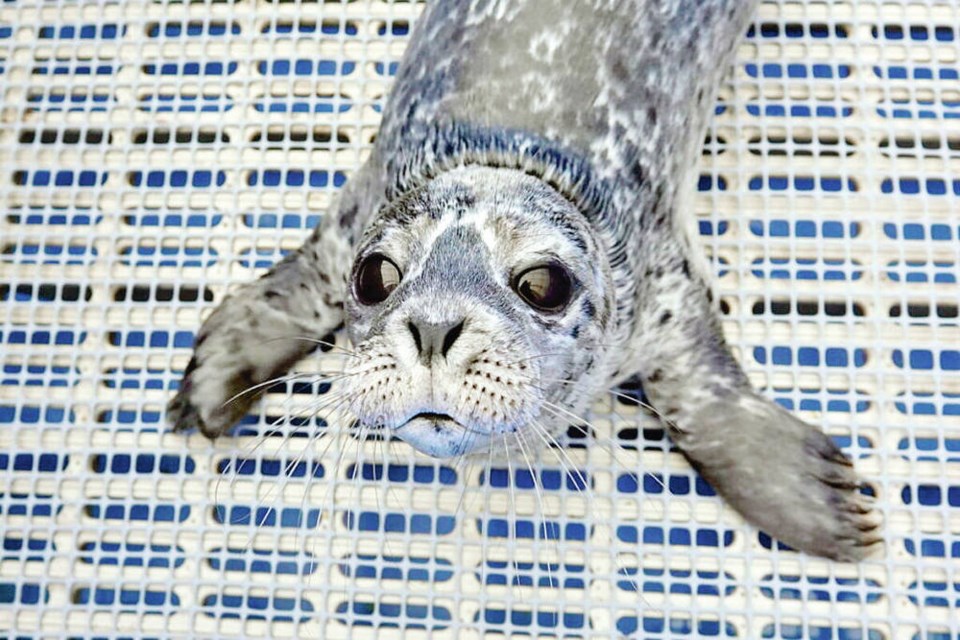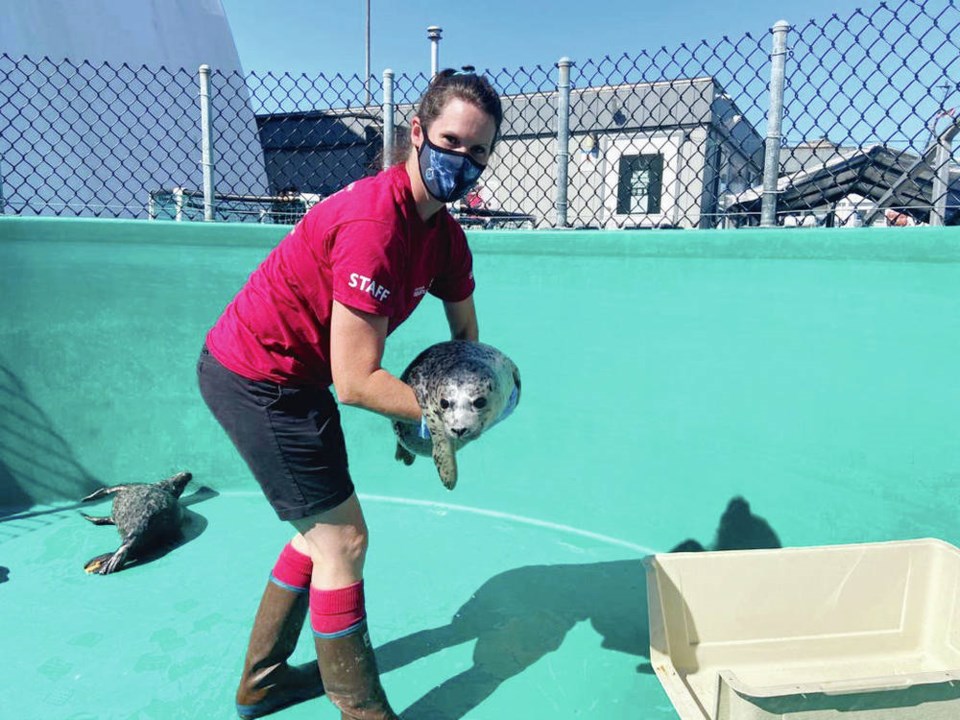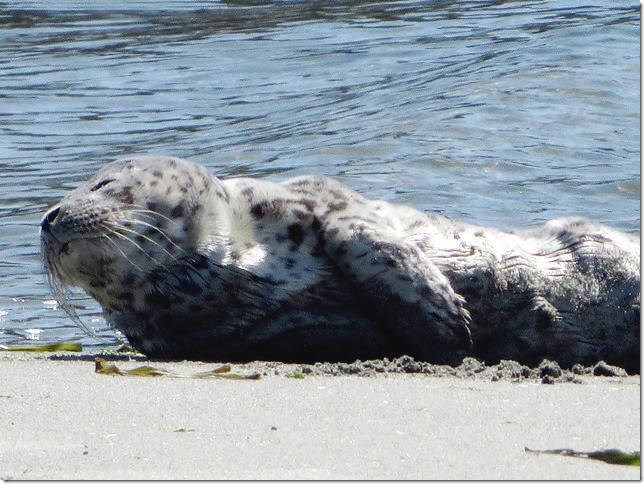Wayne Hollohan watched a seal pup waste away on Sidney Island for about a week.
Severely emaciated, it would lie on the beach and occasionally go out with the tide, only to return.
The pup eventually disappeared and wasn’t seen again. The mother may have finally returned to fetch and feed it or, as Hollohan suspects, it may have of starvation.
And that leaves him wondering why Parks Canada, which manages a portion of Sidney Island as part of the Gulf Islands National Park Reserve, did not call in an organization like the Vancouver Aquarium Marine Mammal Rescue Centre to help.
“Parks staff were telling all who asked about the seal that they were there to protect the seal, when in reality there are watching it suffer and die of starvation,” he said.
“To me and to many others, the concern and horror of it all is to allow it to suffer for days until it dies,” he added. “I would rather kill it myself than be that cruel.”
It’s the height of seal-pupping season on the coast and thousands of tiny harbour seals are lying along beaches, rocky headlands, even the Ogden Point Breakwater. Mothers give birth and nurse on land and leave the pups to forage for food — sometimes for days at a time.

Dustin De Gagne, field supervisor for the Department of Fisheries and Oceans Whale Protection Unit, said newborn harbour seal pups usually nurse for four to six weeks, either on land or in the water. People who encounter them on shore without their mothers often think they have been abandoned. “Usually their mothers have just returned to the water to feed, thermo-regulate or to escape from disturbances caused by human activity such as dogs,” he said.
Many fear the pups have been abandoned, “but not all pups need rescuing,” said Lyndsaye Akhurst, manager of the Vancouver Aquarium Marine Mammal Rescue Centre.
She said some people will take seal pups home and call the centre the next day. Others try to feed them, pet them, talk to them or let their dogs sniff them. Some build driftwood shelters around the pups, and many crowd in for selfies.
Akhurst said some beaches are so busy, the mothers simply won’t return.
The Vancouver Aquarium is reporting an increase in “human interferences” this summer and, as of this week, has had to bring in 80 pups for rehabilitation, including several from the Greater Victoria area. That’s about average for this time of year and on pace for the 150 rescues of past years, but officials say the number of calls is off the charts as more people venture outdoors during the pandemic.
Akhurst said each potential rescue is assessed on an individual basis.
The aquarium works with the DFO’s Marine Mammal Unit. De Gagne said the aquarium has a network of wildlife rescue centres and dozens of skilled volunteers all over the coast, and assessment teams can respond almost immediately.

In the case of the Sidney Spit harbour seal, Parks Canada made a decision not to rescue the pup.
“Seal pups may appear to be sick or distressed, even when they are in good health,” Parks Canada said in a statement, noting the pups can have uneven breathing, nasal discharge, weeping eyes and whiny, bleeping sounds.
Seal pups may also appear emaciated, but recover quickly after feeding.
Letting nature take its course may be difficult to watch — as it was for Hollohan — but Parks Canada said mortality is a fact of life in the wild.
“It is important to note that seal pups have a high mortality rate, and serve as an important food source to a variety of other species. National parks are wild places where natural processes thrive,” the statement said.
“Although it can be difficult to witness these natural cycles at work, the survival and death of animals is part of a healthy ecosystem.”
Parks Canada said it had been monitoring the pup on Sidney Spit for several days, and while the seal did appear emaciated, it was still moving around and its condition was not determined to be dire.
It said staff “do not enter lightly” into interventions such as capturing or euthanizing injured or distressed animals because animals often exhibit remarkable resilience in the wild.
Staff consider the condition of the pup, including its weight, the amount of time it spends at the location, and its behaviour, among other factors.
In certain situations, Parks Canada said it may co-ordinate with the Vancouver Aquarium to perform a rescue. “When determining a course of action, the welfare of the animal as well as the health of the ecosystem as a whole [is considered].”
At the Vancouver Aquarium, Akhurst said the rescue off Ogden Point last weekend was considered justified. A woman grew concerned about the health of the pup and pulled it from the ledge. The SPCA crated the animal and it was flown to Vancouver.
“When the pups are located at busy places, we know the mothers won’t come back,” Akhurst said.



